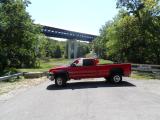For Sale - 2006 Dodge Ram 2500- Flatbed for long box bed Winch bumper Flat Bed for Long Box 3rd generation Cummins Tootlbox are included with key I have a flatbed for 3rd Generation dodge Cummins. This flatbed comes with a gooseneck hitch already in the bed. The winch bumper is part of the set. Tootlbox have a key to lock and unlock all box a single key. There is rust starting and electrical will have to be sorted out on your own.
-
Price: $1,000.00
-
Location: New Meadows, Idaho
 Mopar1973Man 10 posts
Mopar1973Man 10 posts diesel4life 9 posts
diesel4life 9 posts

I really just want to see if it is just me or if others have the same luck. 3 years ago i smoked an airdog 150. Bad seal between motor and pump burned it up. 8 months thirteen days on that one. Replaced with a raptor 100. 123 days later, bad seal, smoked motor. Replaced with a raptor 150, Big lines from DSV to VP. A year and change later. Dead. Opened it up and I'm telling you, no magnets left. Just a big pile of soot and carbon inside. Replaced with a warrantied 150. Eight months to the day, same thing. Dead. Only this time, brushes as well. I rigged up a stocker with some fittings and hooked it to the biglines of the Raptors, plugged it into the raptor harness and away we go. Holds 14 steady with an easy foot and thats what i'm going with. I am not a fan of those pumps and going to run this untill i can afford an assasin. Got to be the biggest pile of horsepucky ive ever seen. :moon:
:moon: